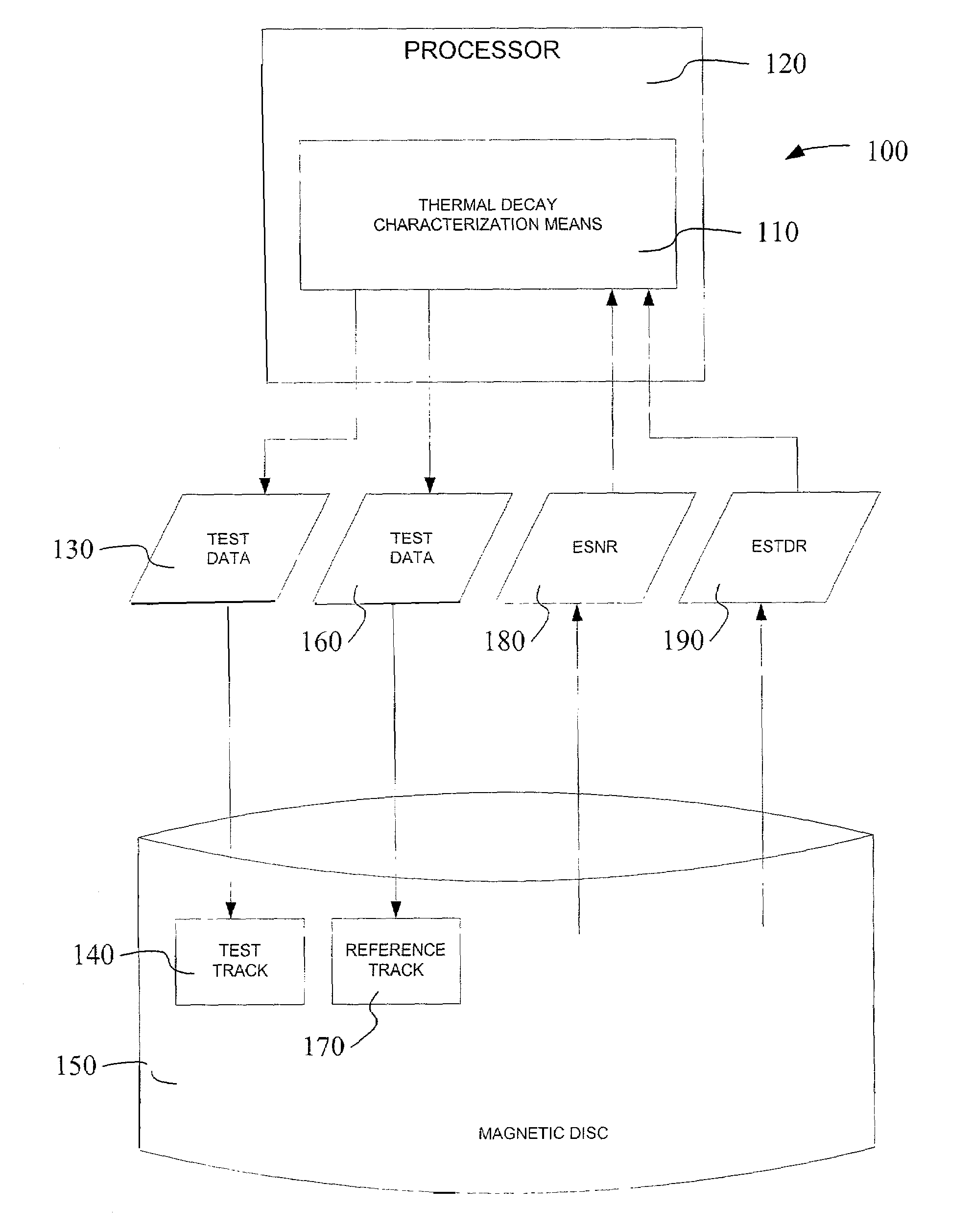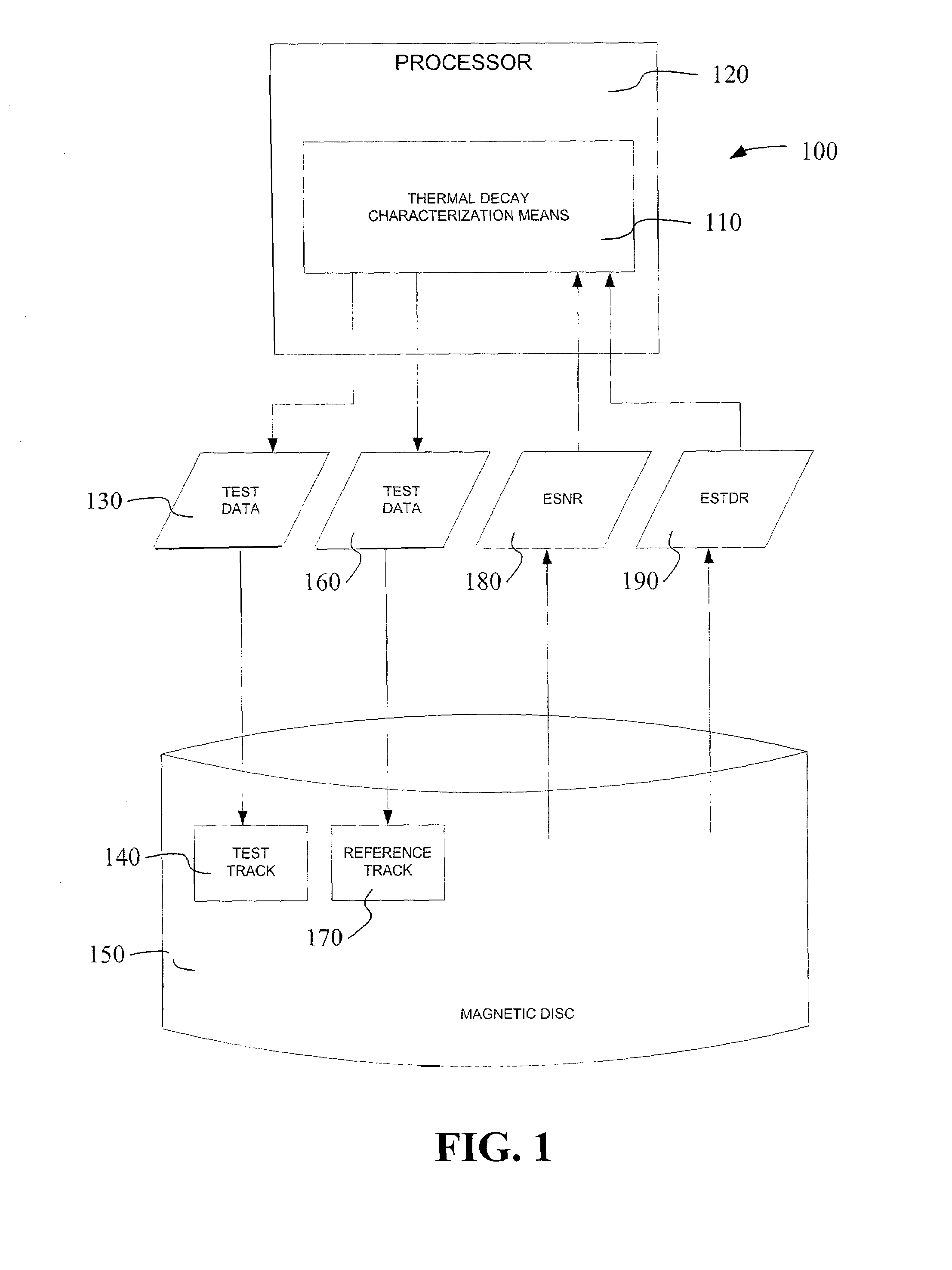Systems, apparatus, and methods to determine thermal decay characterization from an equalized signal-to-noise ratio of a magnetic disc drive device
a technology of equalized signal and thermal decay, which is applied in the measurement of noise figure or signal-to-noise ratio, maintaining head carrier alignment, instruments, etc., can solve the problems of small particles of magnetic material that can become magnetically unstable, the super-paramagnetic effect is detrimental to the reliability of the magnetic hard disc drive, and the magnetic material affected by the super-paramagnetic effect becomes unstabl
- Summary
- Abstract
- Description
- Claims
- Application Information
AI Technical Summary
Benefits of technology
Problems solved by technology
Method used
Image
Examples
Embodiment Construction
[0034]FIG. 1 is a block diagram that provides a system level overview 100 of the operation of embodiments of the present invention. Some embodiments of the invention operate in a processor or microcontroller of a magnetic disc drive, such as disc controller 914 in FIG. 9.
[0035]System 100 includes a thermal decay characterization means 110 operative on a processor 120 to write test data 130 to a test track 140 on a magnetic disc 150 once during a performance of the means 110. The thermal decay characterization means 110 is also operative to write test data 160 a plurality of times to a reference track 170 on the magnetic disc 150. Furthermore, the thermal decay characterization means 110 is operative to gather the time-domain equalized-signal-to-noise ratio (ESNR) represented time-domain ESNR data 180 of the test track 140 and the reference track 170. Moreover, the thermal decay characterization means 110 is operative to gather the equalized signal-to-total-distortion noise ratio (ES...
PUM
 Login to View More
Login to View More Abstract
Description
Claims
Application Information
 Login to View More
Login to View More - R&D
- Intellectual Property
- Life Sciences
- Materials
- Tech Scout
- Unparalleled Data Quality
- Higher Quality Content
- 60% Fewer Hallucinations
Browse by: Latest US Patents, China's latest patents, Technical Efficacy Thesaurus, Application Domain, Technology Topic, Popular Technical Reports.
© 2025 PatSnap. All rights reserved.Legal|Privacy policy|Modern Slavery Act Transparency Statement|Sitemap|About US| Contact US: help@patsnap.com



